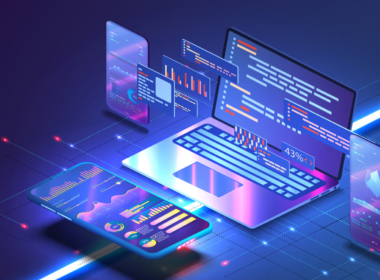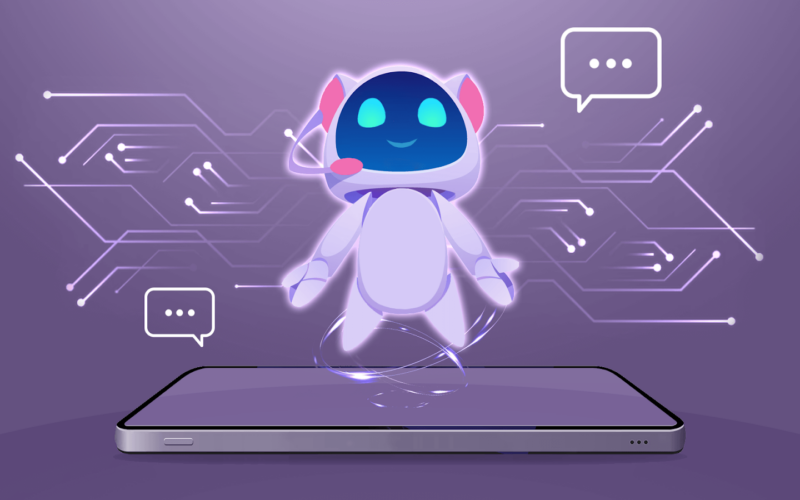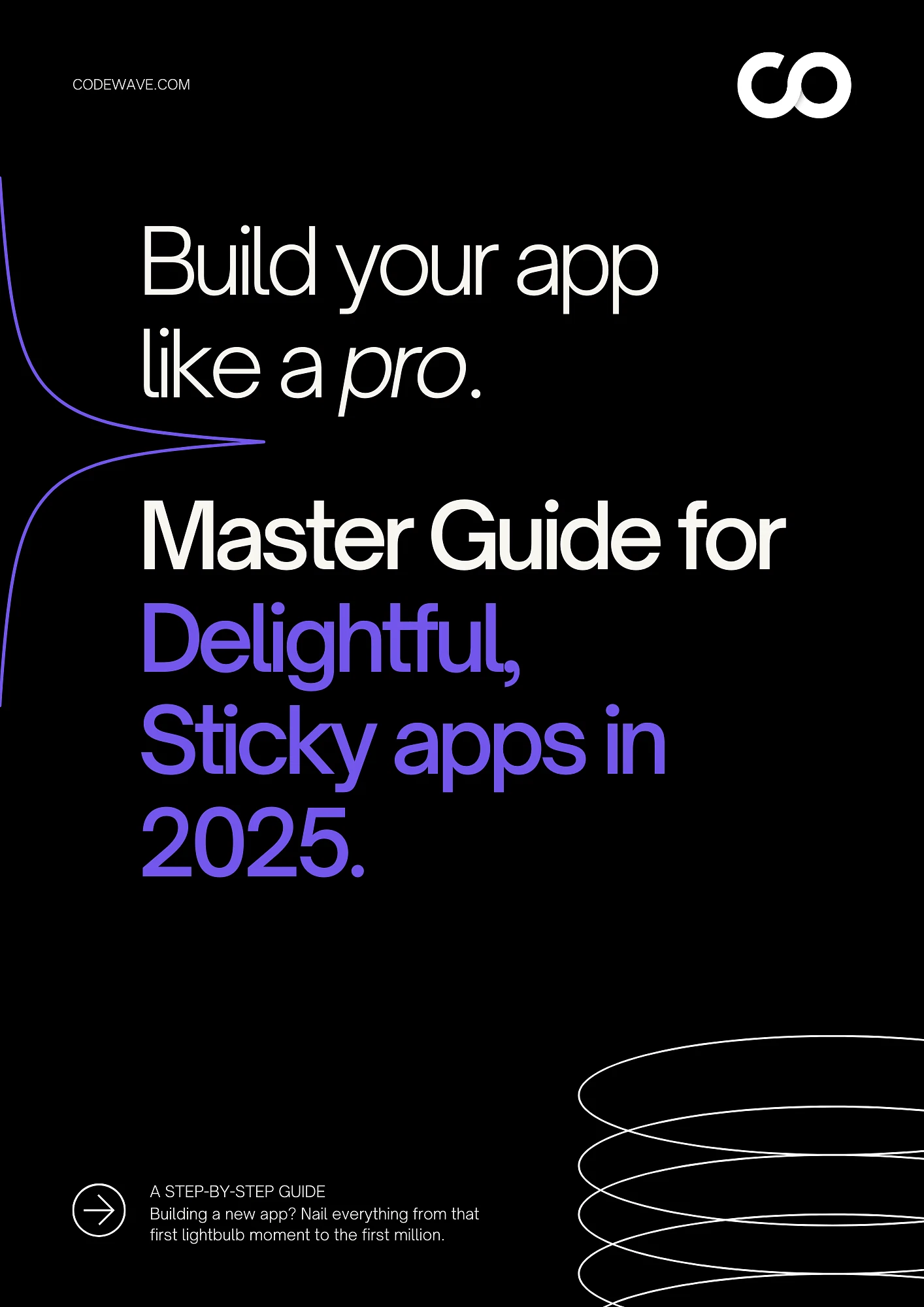Business leaders are under constant pressure to enhance operational efficiency while delivering fast, personalized customer service. However, with outdated systems in place, the constant struggle to meet rising customer expectations often results in missed opportunities and a widening gap between customer demands and business capabilities.
AI chatbots offer a practical solution, providing scalable support that adapts to the needs of modern businesses. By 2025, the number of businesses using AI chatbots has increased by 34%, highlighting the growing reliance on these technologies.
This blog explores the impact of LLM-powered AI chatbots on businesses in 2025, highlighting their practical advantages and the steps companies can take to integrate them effectively.
Key Takeaways
- LLM-based chatbot solutions move beyond scripts to handle context, nuance, and tone, cutting escalations and speeding resolution.
- Multilingual, cross-channel support will become the default, with automatic language detection and consistent CX across WhatsApp, web, and voice.
- Personalization scales via conversation history + retrieval, lifting CSAT and retention without ballooning headcount.
- Automation absorbs FAQs and routine ops; agents focus on edge cases, driving efficiency and cost wins.
- Governance matters: RAG, guardrails, and auditability keep responses factual, private, and compliant
The Current State of AI Chatbots
Traditional AI chatbots primarily handle scripted interactions, managing routine tasks like FAQs, order tracking, and basic troubleshooting. While they offer efficiency for straightforward queries, their capacity to address complex or nuanced customer needs is limited.
These systems often struggle with understanding context, tone, and intent, leading to customer frustration when issues require more personalized attention.
- Customer Preferences and Expectations
A 2025 survey revealed that 82% of customers would choose to interact with a chatbot to avoid waiting for a human representative. However, this preference diminishes when the chatbot fails to resolve their issues effectively, highlighting the importance of chatbot competence in customer satisfaction.
- The Limitations of Legacy Systems
Legacy chatbot systems often rely on predefined scripts and lack the adaptability to handle diverse customer interactions. This rigidity can lead to increased escalation rates, longer resolution times, and a decline in customer satisfaction.
Furthermore, these systems may not integrate well with modern technologies, limiting their effectiveness in a changing environment.
How Will AI Chatbots Evolve with LLM Integration?
AI chatbots are advancing rapidly, with LLMs (Large Language Models) playing a key role in their evolution. LLMs enable chatbots to offer smarter, more efficient, and personalized interactions, meeting the demands of modern businesses and their customers.
The integration of these advanced models not only boosts chatbot performance but also opens new possibilities for multilingual support, automated services, and enhanced personalization.
1. Smarter Chatbots with More Accurate and Human-Like Interactions
Traditional chatbots often rely on predefined scripts, limiting their ability to handle complex or nuanced customer interactions. Integrating Large Language Models (LLMs) enables chatbots to understand and generate human-like responses, improving their ability to manage intricate conversations.
For instance, LLMs can process context, tone, and intent, allowing for more natural and effective communication with users
2. How LLM Integration Supports Multilingual Capabilities
LLMs facilitate the development of multilingual chatbots by providing robust natural language processing capabilities across various languages.
Models like Google’s Gemini and Anthropic’s Claude have been integrated into platforms to support multiple languages, enabling businesses to offer consistent customer service globally.
This integration allows chatbots to automatically detect and respond in the user’s preferred language, enhancing user experience and accessibility.
3. Personalization at Scale: Delivering Tailored Experiences Through AI
LLMs enable chatbots to deliver personalized experiences by analyzing user data, conversation history, and preferences. This capability enables businesses to deliver personalized service at scale, a feat previously only possible through human interaction.
For example, LLMs can tailor responses and recommendations based on a user’s past interactions, improving customer satisfaction and engagement.
4. Automation and Its Impact on Customer Service Operations
Integrating LLMs into chatbots automates routine customer service tasks, such as answering frequently asked questions and processing standard requests. This automation reduces the workload on human agents, allowing them to focus on more complex issues.
Additionally, it leads to faster response times and improved operational efficiency, as demonstrated by companies like Lyft, which reported an 87% reduction in average request resolution time after implementing AI-powered chatbots.
5. Bridging the Gap Between User Intent and Chatbot Responses
Understanding user intent is crucial for effective chatbot interactions. LLMs enhance intent detection by analyzing the context and semantics of user inputs, allowing chatbots to interpret and respond appropriately.
This capability reduces errors and improves the relevance of chatbot responses, leading to a more satisfying user experience.
With the foundations set, here’s how the impact shows up on the business side.
What Are the Key Impacts of LLM-Powered Chatbots for Businesses in 2025?
The integration of Large Language Models (LLMs) into chatbot systems is significantly transforming business operations across various industries. These advancements are driving efficiencies, cost savings, enhanced customer engagement, and strategic decision-making.
Here’s a breakdown of how LLM-powered chatbots are making a tangible impact.
1. Increased Operational Efficiency Through Smarter Automation
LLM-powered chatbots can handle higher volumes of customer interactions simultaneously, minimizing the need for large support teams. Businesses can operate more efficiently and allocate resources to complex inquiries by automating routine tasks.
- Example: Klarna, a fintech company, uses AI-powered chatbots to manage two-thirds of its customer service inquiries. This automation has led to a projected $40 million increase in annual profits.
2. Cost Savings
Automating routine tasks with LLM-powered chatbots can drastically reduce operational costs for businesses, allowing them to allocate resources more effectively.
- Example: Vodafone and Alibaba have adopted AI and Retrieval-Augmented Generation (RAG) chatbots, saving millions annually by automating routine inquiries and improving first-contact resolution
3. Improved Customer Engagement and Retention via Better Conversational AI
LLM-powered chatbots offer personalized, real-time interactions that can lead to better customer satisfaction, increased loyalty, and higher retention rates.
- Example: Comcast’s “Ask Me Anything” (AMA) system assists agents in real-time, reducing the time spent per conversation and improving customer service efficiency. This leads to higher customer engagement and better outcomes.
4. Competitive Advantage for SMEs in Scaling Operations
LLM-powered chatbots allow SMEs to scale their operations efficiently without the need for significant increases in staff. This makes it easier for small and medium-sized enterprises to compete with larger players.
- Example: Startups like LimeChat have automated up to 95% of customer service interactions, enabling them to manage a larger customer base effectively without proportional increases in staffing. This gives SMEs a significant competitive edge in the market.
Looking ahead, development trends point to broader channels, safer AI, and deeper use cases.
What Are the Emerging Trends in AI Chatbot Development for 2025?
AI chatbots are advancing beyond basic customer support, integral to various business functions. These developments are changing industries by enhancing user experiences, streamlining operations, and fostering deeper customer relationships.
1. Integration with New Communication Platforms
AI chatbots are expanding their presence across diverse communication channels, including social media platforms and voice assistants, to meet users where they are.
- Social Media Integration: Platforms like WhatsApp and Instagram are increasingly utilized for customer interactions. For instance, Chatic Media combines AI-powered chat with live agent fallback across these channels, significantly reducing response times while maintaining human-like conversations when needed.
- Voice Assistants: Amazon’s Alexa+ has been upgraded with generative AI capabilities, offering more natural and context-aware interactions. This enhancement allows users to manage routines, summarize topics, and execute multi-step commands with greater ease.
- Entertainment Platforms: Roku’s AI-enhanced voice assistant now provides contextual answers about movies and shows, such as “How scary is The Shining?” or “What kind of fish is Nemo?” This feature enriches the user experience by offering interactive and informative responses.
2. Focus on Ethical AI and Transparent Chatbot Responses
As AI chatbots become more prevalent, ensuring ethical development and transparency is crucial to maintain user trust and compliance with regulations.
- Transparency Initiatives: Companies are adopting Explainable AI (XAI) techniques to provide insights into AI decision-making processes. This approach helps users understand how chatbots arrive at specific responses, fostering accountability and trust.
- Ethical Guidelines: Organizations are implementing ethical AI charters and governance frameworks to address potential biases and ensure responsible AI usage. For example, Microsoft has established responsible AI principles and practices to uphold ethical standards in AI development.
- Regulatory Compliance: Governments are introducing legislation to regulate AI interactions, especially concerning minors and mental health risks. OpenAI’s announcement of an adult-only version of ChatGPT, with age-verification measures, reflects the industry’s response to such regulatory developments.
3. Advanced Use Cases: From Sales Support to HR Automation
AI chatbots are being leveraged across various business functions, from sales and marketing to human resources, to automate processes and enhance efficiency.
- Sales Support: AI chatbots assist in lead qualification, product recommendations, and follow-up communications, streamlining the sales process and improving conversion rates.
- HR Automation: In human resources, chatbots handle tasks such as resume screening, interview scheduling, and employee onboarding, reducing administrative burdens and accelerating hiring processes.
- Customer Service: AI chatbots provide 24/7 support, addressing customer inquiries, processing orders, and resolving issues promptly, leading to enhanced customer satisfaction.
4. The Rise of AI-Powered Hybrid Chatbots Combining Human and AI Efforts
Hybrid models integrating AI capabilities with human oversight are emerging to deliver more personalized and compelling customer experiences.
- Human-AI Collaboration: AI handles routine inquiries, while human agents manage complex or sensitive issues, ensuring efficient and empathetic customer service.
- Enterprise Integration: Salesforce’s Agentforce 360 platform exemplifies this trend by combining AI agents with human expertise across various business functions, enhancing productivity and operational efficiency.
- Healthcare Applications: Hybrid chatbots assist in patient triage, appointment scheduling, and follow-up care, improving access to medical services and patient engagement.
5. User-Centric Design and the Shift from Functional to Conversational Interfaces
The design of AI chatbots is evolving to prioritize user experience, focusing on intuitive and engaging interactions.
- Conversational Interfaces: Chatbots are being designed to understand context, anticipate user needs, and provide proactive assistance, moving beyond simple query-response models.
- Emotional Intelligence: Advanced chatbots incorporate emotional recognition to tailor responses based on user sentiment, enhancing the quality of interactions.
- Cross-Platform Consistency: Ensuring a seamless experience across various devices and platforms is becoming a standard in chatbot design, accommodating diverse user preferences.
Codewave’s Approach to LLM-Based Solutions
At Codewave, we use Large Language Models (LLMs) to create advanced, AI-driven chatbot solutions that significantly enhance customer engagement and operational efficiency.
By integrating LLMs, we help businesses streamline interactions, automate responses, and deliver highly personalized customer experiences across all touchpoints. Some key solutions we offer:
- Conversational UX with AI-Powered Chatbots: We develop custom conversational interfaces that improve user engagement and customer support.
- Automation of Processes: Codewave uses GenAI to simplify complex processes, such as automating inventory management, product recommendations, and order processing.
- Predictive Analytics for Smarter Decisions: Our AI models analyze customer data, identify trends, and provide valuable insights for businesses.
- AI for Personalization at Scale: We integrate hyper-targeted personalization through machine learning algorithms, enabling real-time, tailored recommendations based on user preferences and browsing history.
- Rapid, Secure Releases: Our CI/CD pipeline enables continuous improvements, allowing businesses to scale efficiently without compromising security or performance.
Contact Codewave today, and let’s integrate advanced AI into your app to provide exceptional customer experiences. Explore our portfolio to see how we’ve helped businesses scale and optimize operations.
Conclusion
Integrating large language models (LLMs) into chatbot systems changes user interactions by enabling dynamic, context-aware conversations. Techniques such as Retrieval-Augmented Generation (RAG) improve LLM performance by incorporating real-time external data, reducing hallucinations, and ensuring responses are grounded in factual information.
However, implementing LLM-based chatbots requires careful consideration of data privacy, ethical standards, and the right technological infrastructure.
At Codewave, we specialize in creating robust, AI-powered chatbot solutions tailored to your business needs. From design thinking to advanced AI integrations, our team ensures seamless performance and impactful results.
Let’s discuss how we can enhance your customer engagement and operational efficiency. Contact us today!
FAQs
Q: Build or buy: how should we choose an LLM-based chatbot solution?
A: Start with a pilot on a managed platform to validate value, then decide what to insource. Map needs across channels, languages, and volumes, and check the roadmap fit. Factor total cost: infra, data pipelines, observability, guardrails, and ongoing prompt/knowledge updates.
Q: How do we protect sensitive data and stay compliant?
A: Apply PII redaction at ingestion, constrain retrieval to approved corpora, and use role-based access on vector stores. Log every answer with source citations for audits. Pick regions for data residency, and set retention windows that match legal policies.
Q: What KPIs prove ROI in the first 90 days?
A: Track first-contact resolution, average handle time, deflection rate, CSAT, and cost per conversation. Pair that with lead capture or conversion where sales is in scope. Create a “control” queue to compare human-only vs. assisted performance week by week.
Q: How do we stop prompt injection and jailbreak attempts?
A: Run input/output filters, allow only whitelisted tools, and ground answers through RAG with citation checks. Add policy classifiers for safety and brand tone, then quarantine risky sessions for review. Pen-test the bot with red-team scripts before launch and on each model upgrade.
Q: What’s the best way to design human handoff and SLAs?
A: Define confidence thresholds for handoff, pass full conversation context, and surface suggested replies to agents. Expose wait times and escalation paths to the user to reduce friction. Measure post-handoff outcomes so the bot learns which patterns to route faster next time.
Codewave is a UX first design thinking & digital transformation services company, designing & engineering innovative mobile apps, cloud, & edge solutions.







